MSI Creator TRX4 Motherboard BIOS
The MSI Creator TRX4 Motherboard BIOS is very much like past MSI motherboards we have reviewed. It allows a fast overclock through the top left OC Genie dial.
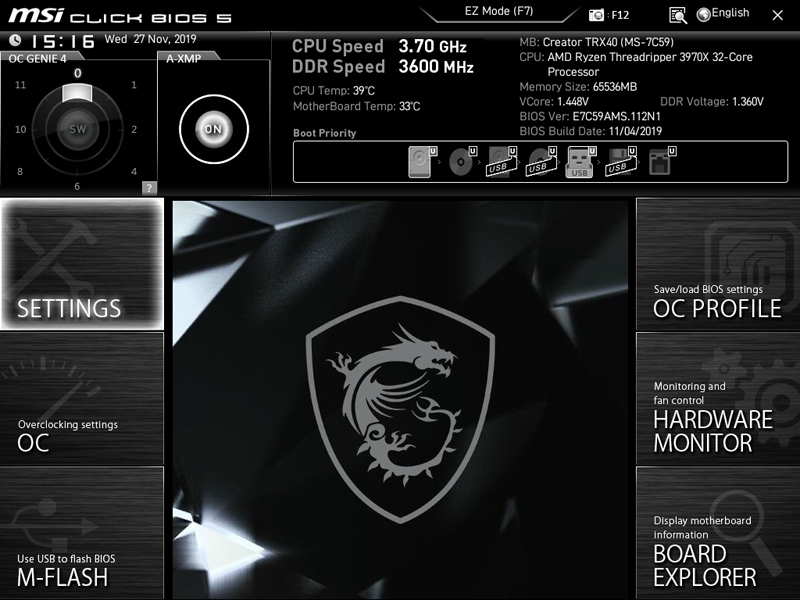
Here is a list of available OC Genie settings and what each indicator does.
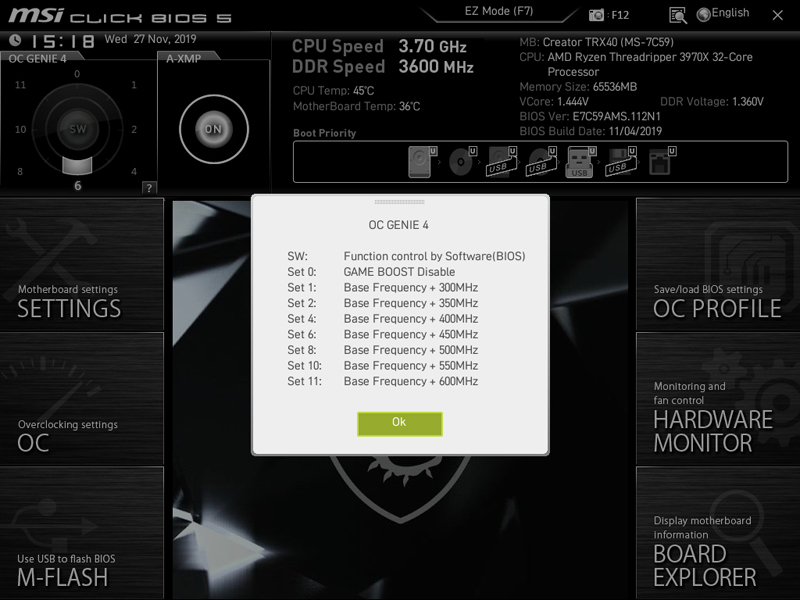
On the AMD Ryzen Threadripper platforms, one has the option to overclock, but many users are not going to. These chips already use a lot of power and AMD is fairly aggressively using turbo clocks to take advantage of extra frequency headroom.
We will cycle through the various BIOS screens below.
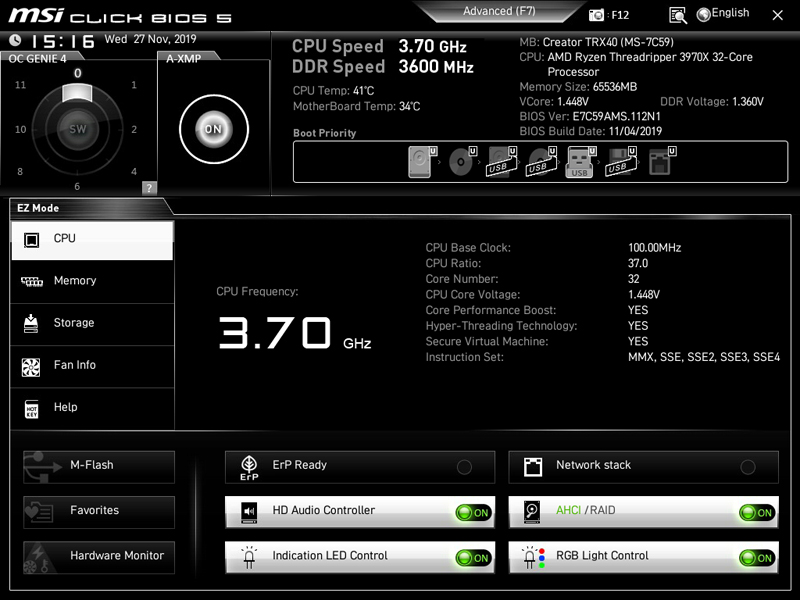
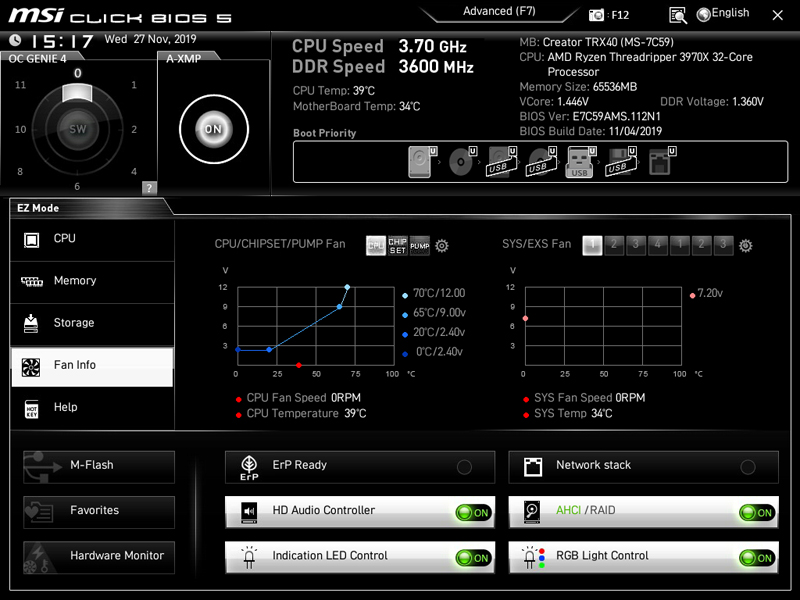
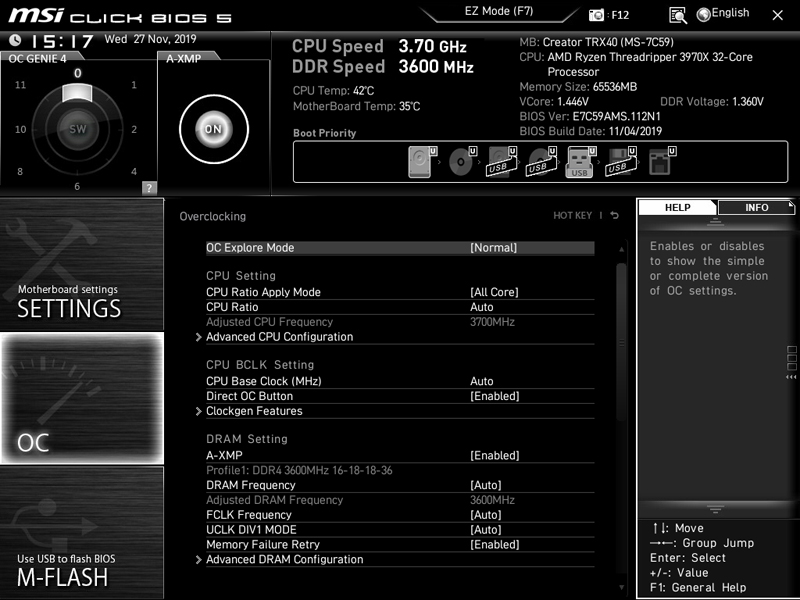
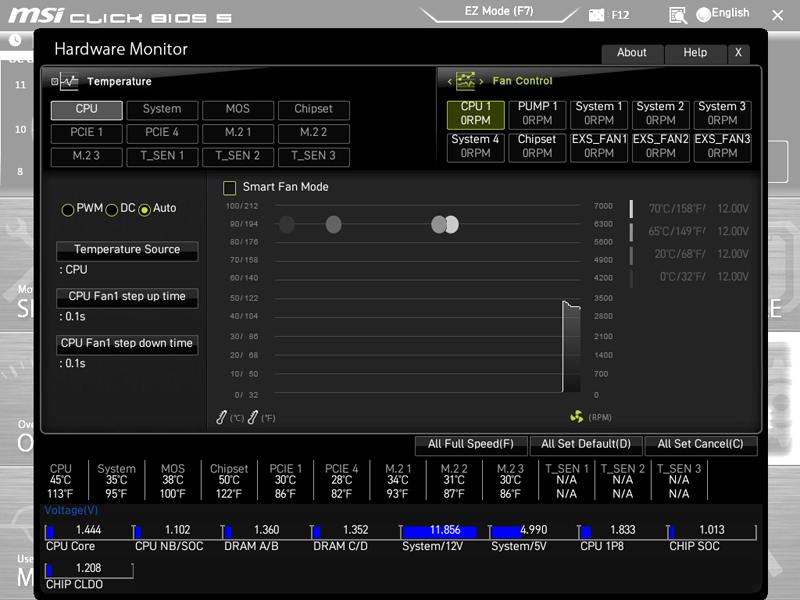
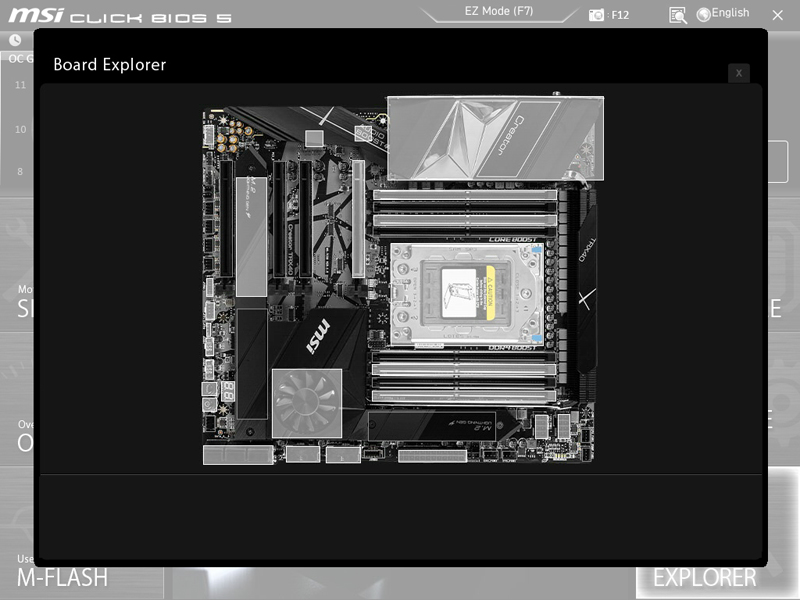
Overall, if you are coming from a dual Intel Xeon workstation, this will look a lot more visually appealing than what you are likely coming from.
MSI Creator TRX40 Motherboard Software
Drivers and Utilities for the MSI Creator TRX40 Motherboard are found on a USB Drive. Other vendors are still shipping CD/DVD optical media so we like this decision by MSI to include drivers on USB.
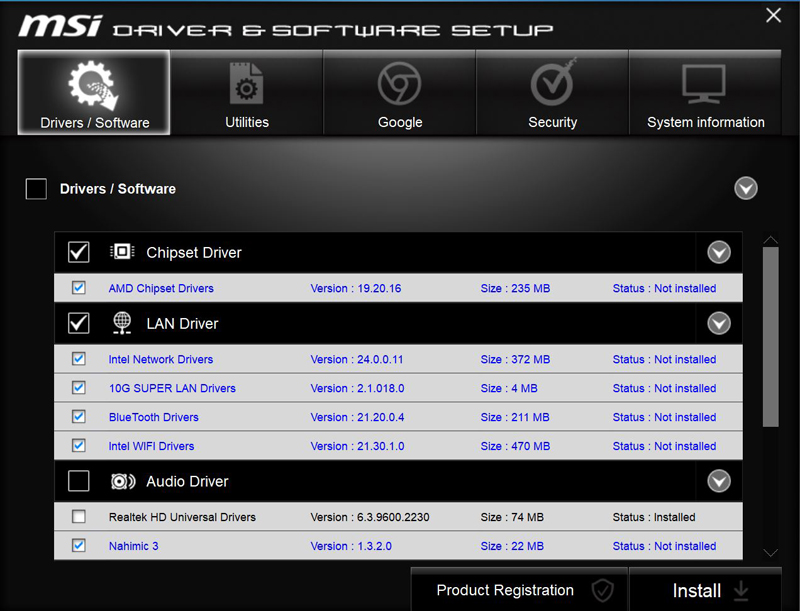
The last tab of interest is the Utilities section, which brings up the next window.
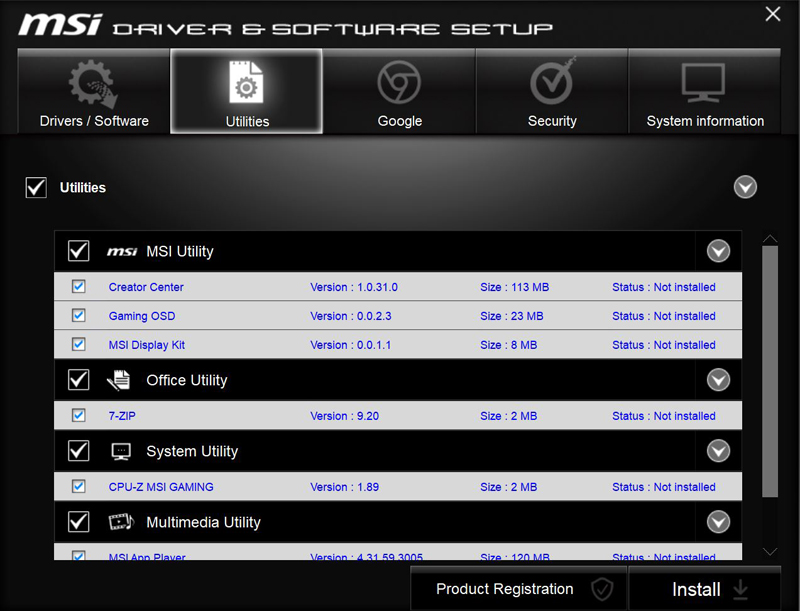
One key software to look at is MSI Creator Center which allows a multitude of system adjustments based on applications used.
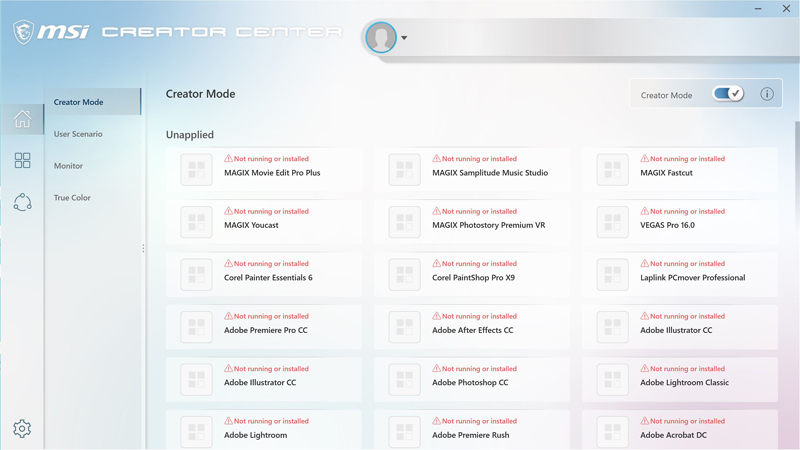
This is a significant feature for MSI. Many high-end professional workstations with single or dual Intel Xeons have system profiles for certain applications. This is a clear step in that direction.
Next, we are going to do a quick specification check and commence with our performance benchmarks.

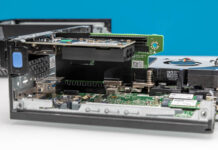


Many thanks, William: Please permit me to share one of my pet peeves about NVMe.
You will hopefully recall how multiple integrated SATA ports eventually became standard
with full support for all modern RAID modes. It is my sincere hope that motherboard
and storage vendors will make it an industry goal to integrate full BOOTABLE support
for all modern RAID modes for any number of integrated M.2 ports. We have had a
lot of success formatting SSD RAID-0 arrays with Windows drive letters C: / E: and
with D: typically assigned to a hard-wired optical drive. We will only upgrade to
a TR system, like this excellent MSI motherboard, unless we can do fresh OS installs
to a fast RAID-0 array of multiple M.2 NVMe drives. Because we also rely a lot
on large ramdisks in our workstations, we need a fast non-volatile partition
where the latest ramdisk contents can be saved at SHUTDOWN and then
restored quickly at the next STARTUP. The ramdisk software we are currently
using has a neat “block” logic, which only requires saving logical blocks which
have changed since the most recent STARTUP. Given the speed we anticipate
with Gen4 M.2 RAID-0 arrays, the STARTUP and SHUTDOWN sequences should
be so incredibly fast as to be almost unnoticeable! Thanks again. /s/ Paul
We currently have one of these boards with a 3960X and 7 FireCuda 520 PCIe 4 2TB drives. I have configured six of them in RAID 0. I can tell you it’s stupidly fast (>20gbps synthetic disk performance)!
I’d be curious to know what people think is the best memory option for this board.
Pity they didnt include BMC/IPMI..
@Aaron Do you know how to build Unreal Engine 4 from source? I would love to see how fast that ThreadRipper machine can build it. My 6 core machine takes 73 minutes for reference.
The board does not support out-of-box SR-IOV, I was able to enable it (after a couple of days of research) with a workaround for it in KVM (not sure it’s even possible in Windows virtualisation or VMWare).
MSI kindly agreed to build a custom BIOS to enable that but also stated that the feature will never make it into an official BIOS.
If you want SR-IOV, look elsewhere (or ask for a custom BIOS – assuming MSI will be willing to do it) and before you buy any TRX40 motherboard, ask the manufacturer.
The trouble with custom BIOS is that there’s no “tracking” – once it is issued, there’s no guarantee MSI will rebuild it when new official BIOSes are released.